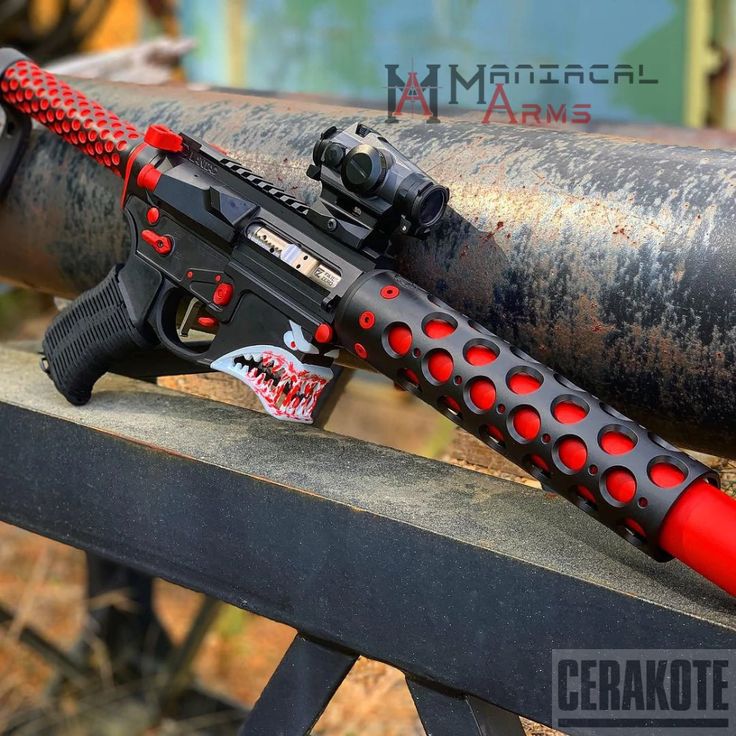How to Organize a Fashion Show: Step‑by‑Step Playbook with Downloadable PDF Frameworks
Overview
Organizing a fashion show requires a clear concept, disciplined project management, and reliable tools. This end-to-end guide walks you through team roles, budgeting, venue selection, merchandising and styling, production, marketing, rehearsals, and show-day control. It also points you to verified PDF checklists and templates you can use as your working toolkit, including timelines, budgets, team structures, and run-of-show outlines drawn from education, nonprofit, and professional fashion production resources [1] [2] [3] [4] [5] .
1) Define the Concept and Objectives
Start with a precise goal: collection launch, charity fundraiser, brand activation, or student showcase. Your theme should reflect the collection’s hero pieces and audience, guiding music, lighting, casting, staging, and communications. Education materials emphasize aligning theme with collection and audience expectations, then building all creative and logistical decisions around that direction [5] . Professional guides encourage committing the concept to a written plan and tracking documents from day one-budgets, timelines, and responsibility sheets-to control scope and cost [4] .
Implementation steps: write a one-page creative brief (theme, audience, tone, key looks, show length), list outcomes (e.g., press pickups, funds raised, sales appointments), and define hard constraints (date window, venue capacity, budget ceiling). Example: a campus charity show sets a 60-75 minute program with three segments tied to a cause narrative and a post-show pledge moment; this aligns to team roles and a fundraising target [3] .
2) Build the Core Team and Assign Roles
Assign clear ownership early. Effective student and nonprofit guides outline practical roles: show producer (overall), backstage manager (run-of-show execution), casting manager (models and rehearsals), stylist(s) (looks and fittings), treasurer (budget, expenses), publicity officer (tickets, promotion), and fundraising/entertainment lead (sponsors, activations) [3] . Club frameworks also emphasize contracts, security, sponsorship, and merchandise coordination as dedicated workstreams [1] .

Source: wikihow.com
Implementation steps: create a responsibility sheet and org chart so decisions are fast and documented; set weekly standups with minutes. Professional textbooks provide samples for organization charts, responsibility sheets, and planning calendars you can adapt as a PDF kit for your team [4] .
3) Budgeting, Timeline, and Risk Control
Draft a detailed line-item budget and a critical path timeline from 6-8 months out through show day. Practical checklists recommend staging costs, rentals, AV/lighting, venue, security, insurance, styling, hair/makeup, marketing, tickets/box office, and hospitality. They also provide month-by-month tasks (e.g., model recruitment by month 4, fittings by month 1, rehearsals in the final weeks) [2] . Club guides add essentials such as model release forms, contracts, and security coordination in the event proposal package [1] .
Implementation steps: convert a sample planning calendar and budget template into your master workbook; identify top risks (venue availability, lighting specs, model no-shows) and pre-empt with backups and deposits. Professional planning references highlight using a master plan and final budget documents to manage approvals and change control as the show approaches [4] .
4) Venue Selection and Production Design
Choose a venue that supports your runway format, capacity, and technical needs. Production notes stress that prestigious venues book early during peak season; directors typically secure multi-day rental windows to allow build, show, and strike, with contracts specifying load-in/out and usage [5] . During the proposal phase, include AV, staging, security, and vendor contract requirements to avoid overruns and last-minute changes [1] .
Implementation steps: draft a technical rider covering runway length/height, audience sightlines, power needs, lighting positions, audio playback, backstage dressing rooms, and model flow routes. Confirm rentals for rolling racks, mirrors, carpet, and staging well ahead; production checklists call out these items and the need to coordinate with venue chairs or managers on AV elements [2] .
5) Casting, Styling, and Wardrobe Logistics
Begin casting 2-4 months out, finalize looks, and schedule fittings. Practical guides recommend formalizing your casting approach, noting model release forms and rehearsals. A structured checklist schedules recruiting, fittings, stylist confirmation, and music selection within the production window, with a model rehearsal cadence in the final weeks [2] . Club and nonprofit resources reinforce having the casting manager coordinate rehearsals and the stylist manage the running order and fittings [1] [3] .

Source: wikihow.com
Implementation steps: build a look book with assignments per model, label hangers with model names, and maintain a quick-change map backstage. Include a “fashion emergency kit” (stain remover, pins, hairspray, duct tape, deodorant) as recommended in event checklists to minimize disruption during quick turns [2] .
6) Marketing, Sponsorship, and Ticketing
Craft a marketing plan aligned to your show’s objective. Campus and nonprofit guides suggest appointing a publicity officer to manage ticketing and promotions and a fundraising/entertainment lead for sponsorships, raffles, and cause messaging if applicable [3] . Club frameworks also incorporate advertising, sponsorship outreach, silent auctions, and merchandise plans in the event proposal, enabling cost offsets and revenue goals [1] .
Implementation steps: build a media list, draft a news release, and establish a posting calendar. Professional production references note that templates for news releases and planning calendars help standardize outreach; adapt these to your brand guidelines and schedule [4] . For sponsors, create tiers (e.g., runway, segment, backstage) with clear benefits such as logo placements, VIP seating, and post-show networking.
7) Run of Show, Rehearsals, and Show-Day Control
Lock your run-of-show with minute-by-minute cues covering lighting, audio, entrances/exits, and changeovers. Conduct full rehearsals to stress test timing, spacing, and transitions. Practical checklists advise rehearsals in the weeks leading to the event, plus final confirmations on rentals, AV, and volunteer changers. On show day, stage managers should follow the cue sheet and maintain strict backstage access control [2] . Club operations add security coordination and on-site ticket controls as part of the master checklist [1] .
Implementation steps: create a printed cue binder and distribute subset pages to AV, backstage, and front-of-house leads. Establish hand signals and comms channels. Prepare contingency plans (music fails, model no-show); designate understudies or resequence options. Keep a post-show evaluation sheet ready to capture lessons learned for next season; professional production materials emphasize post-event evaluation as part of the full cycle [4] .
8) Compliance, Contracts, and Insurance
Include contracts for venue, vendors, and security; acquire insurance where required for garments, equipment, and public liability. Campus and club frameworks explicitly enumerate contracts, security, and model releases within the event requirements and checklists [1] . Nonprofits advise recording expenses, tracking money raised, and clarifying insurance considerations for clothing and event operations [3] .
Implementation steps: assemble a compliance pack with signed contracts, permits, insurance certificates, and waivers. Confirm venue policies on rigging, fire codes, capacity, alcohol, and noise curfews. Keep digital and printed copies accessible to the producer and venue manager on show day.
Downloadable PDF Toolkits and How to Use Them
You can streamline planning with verified, accessible PDF checklists and templates:
- Student club end-to-end checklist (dates, budgets, contracts, security, releases, tickets, sponsorships, clothing, itineraries): use as your high-level Gantt and approvals tracker [1] .
- Production checklist and month-by-month timeline (models, AV, rentals, fittings, rehearsals, emergency kit, runway assets): use as your weekly execution plan and day-of pack list [2] .
- Nonprofit planning guide (team roles, ticketing, fundraising, publicity, insurance): use for role charters and fundraising activation design [3] .
- Professional production forms and templates (org charts, responsibility sheets, budgets, calendars, news releases) drawn from a fashion show production text: adapt to create your master documentation kit [4] .
- Venue contracting and scheduling considerations from an academic planning document: reference for rental windows, creative feasibility, and location demand in peak seasons [5] .
Step-by-Step Execution Blueprint
Below is a practical timeline you can copy into your plan. Adjust based on scale and lead time.
6-8 months out: define objectives; draft concept brief; map initial budget; shortlist venues; identify producer, backstage manager, casting manager, stylist, treasurer, publicity, and fundraising leads. Begin sponsor prospecting and venue holds; use the club and nonprofit role frameworks to set meeting cadence and reporting [1] [3] .
4-6 months out: contract venue; confirm AV/staging scope; launch model casting; draft marketing plan and news release; refine budget; secure security vendor if required. Academic and club guides underscore early venue contracting and technical feasibility reviews with your creative team [5] [1] .
2-3 months out: finalize model roster; confirm stylist and fittings schedule; book rentals (racks, mirrors, runway carpet, stage); select music; lock sponsorship packages; open ticket sales with clear refund and entry policies. Use the production checklist to ensure AV and rentals are on track and music selection is aligned with the run-of-show [2] .
3-4 weeks out: conduct rehearsals; print cue sheets; assemble backstage kits; assign dressing teams; finalize signage and seating charts; push final marketing; confirm security posts and front-of-house briefings. The checklists emphasize rehearsals, volunteer changers, and labeling systems for quick changes [2] .
Show day: execute load-in per schedule; run sound/light checks; hold a full cue-to-cue; enforce backstage access; follow the run-of-show; document issues; conduct post-show debrief and evaluation. Professional production references recommend using evaluation sheets and a final budget reconciliation after the event for continuous improvement [4] .
Common Challenges and Practical Solutions
Scheduling conflicts and venue constraints: mitigate by holding multiple venue options early and securing multi-day windows for build/strike as suggested by venue-planning guidance [5] . Model no-shows or late arrivals: maintain standby talent and resequencing options; tighten communication via a casting manager and detailed rehearsal schedules [3] . Backstage congestion and changeover delays: implement labeled racks, route mapping, and volunteer changers; use the emergency kit and rehearsed quick-change protocols highlighted in production checklists [2] . Budget overruns: rely on responsibility sheets, budget forms, and periodic approvals as advocated in professional planning materials [4] . Security and compliance gaps: include security in the original event proposal and confirm contracts and insurance as standard requirements [1] .
How to Package Your Own PDF Playbook
To share your plan with stakeholders, compile a concise PDF that includes: concept brief; org chart and role charters; master timeline; budget; venue tech rider; model release and contact sheet; styling plan and run-of-show; marketing plan and news release; sponsorship packages; security plan; insurance and contracts checklist; rehearsal plan; show-day cue book; post-show evaluation form. Use and adapt the referenced templates and checklists to accelerate production and keep every contributor working from the same, up-to-date documents [4] [1] [2] [3] .
References
[1] Western USC (2024). Running a Successful Fashion Show-Guideline and Tips (PDF).
[2] Wine Women & Shoes (2016). Fashion Show Checklist (PDF).
[3] Amnesty International UK. How to Plan a Fashion Show (PDF).
[4] Guide to Producing a Fashion Show (3rd ed.)-Forms and Templates (Preview).
[5] LIUC Material (Academic). Organizing a Fashion Show (PDF).


